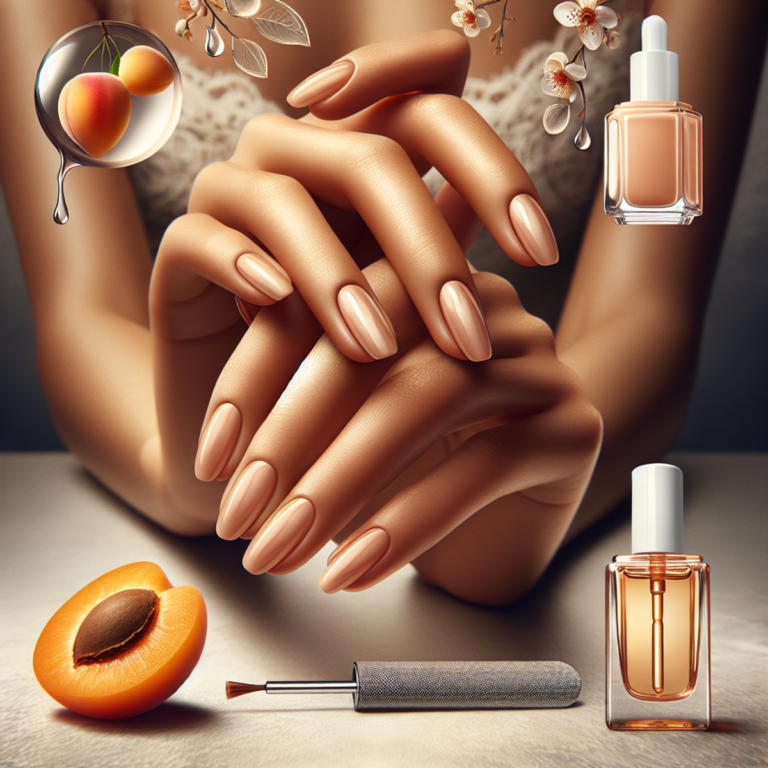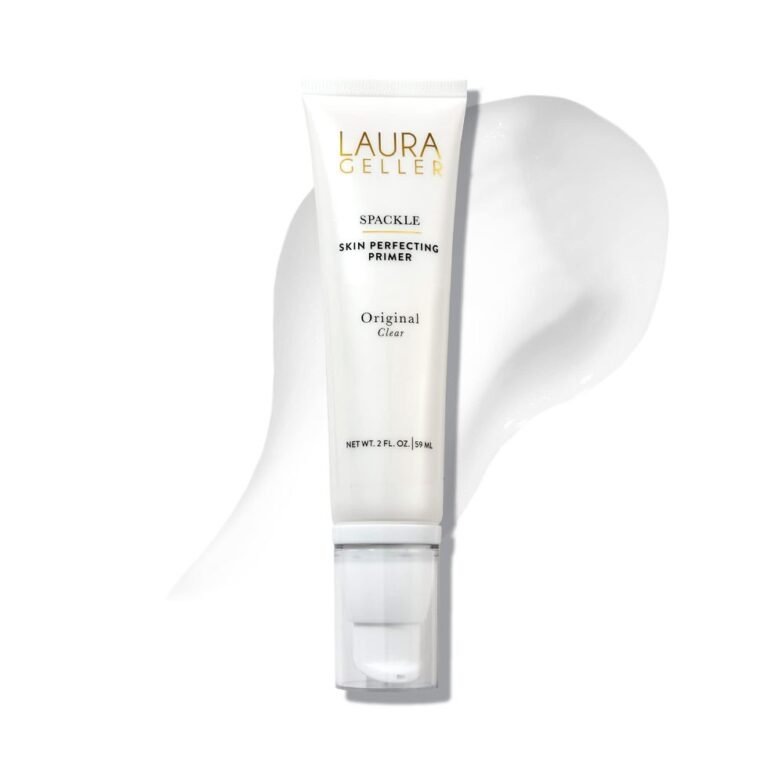Is Your Exfoliation Routine Damaging Your Pores and skin?

Introduction
Exfoliation is a popular skincare practice that involves removing dead skin cells from the outermost layer of the skin. Many people exfoliate regularly to get smoother, brighter skin. It can help improve skin texture, clear out pores, and boost cell renewal.
But here’s the thing: some people worry that exfoliating too much can harm their skin. With all the exfoliating products and methods out there, it’s crucial to know how to exfoliate correctly without hurting your skin.
In this article, we’ll look into the possible dangers of over-exfoliation and how it can harm your skin. We’ll talk about the importance of a healthy skin barrier and what happens when it gets damaged. Plus, we’ll share tips on how to create a safe exfoliating routine based on your specific skin type.
By the end of this article, you’ll have a better grasp of how to steer clear of skin damage caused by improper exfoliation techniques. So let’s jump right in and uncover how you can enjoy all the perks of exfoliation while maintaining healthy, glowing skin!
Understanding Exfoliation
Exfoliation is a skincare practice that involves the removal of dead skin cells from the outermost layer of the skin. It is an essential step in any skincare routine as it helps to rejuvenate and revitalize the skin, leaving it looking brighter and smoother. There are two main methods of exfoliation: physical exfoliation and chemical exfoliation.
1. Physical Exfoliation
Physical exfoliation involves using beads or particles to physically scrub the skin and remove dead skin cells. This can be done through the use of facial scrubs, brushes, or even washcloths. Physical exfoliators work by physically sloughing off dead skin cells and stimulating blood circulation.
2. Chemical Exfoliation
Chemical exfoliation, on the other hand, involves using acids or enzymes to dissolve dead skin cells. These acids can be classified into two categories: alpha hydroxy acids (AHAs) and beta hydroxy acids (BHAs). AHAs, such as glycolic acid and lactic acid, are water-soluble and work on the surface of the skin to loosen and remove dead skin cells. BHAs, such as salicylic acid, are oil-soluble and can penetrate deeper into the pores to unclog them.
Exfoliation aids in the removal of dead skin cells by speeding up the natural process of cell turnover. Our skin naturally sheds off dead skin cells, but as we age, this process slows down, leading to a buildup of dead skin cells on the surface. By exfoliating regularly, we help to remove these dead skin cells, revealing fresher and healthier-looking skin underneath.
Regular exfoliation not only helps to improve the texture and tone of the skin but also allows for better absorption of skincare products such as serums and moisturizers. When there is a buildup of dead skin cells on the surface, it creates a barrier that prevents these products from penetrating deeply into the skin. By exfoliating, we remove this barrier and allow our skincare products to work more effectively.
However, it is important to note that exfoliation should be done in moderation. Over-exfoliating can lead to skin irritation, dryness, and even damage to the skin barrier. It is recommended to exfoliate no more than 2-3 times per week, and for those with sensitive or reactive skin, once a week is sufficient.
The Role of the Skin Barrier in Maintaining Healthy Skin
The skin barrier, also known as the stratum corneum, plays a crucial role in maintaining healthy skin. It is the outermost layer of the skin and acts as a protective barrier against external factors such as pollution, UV radiation, and harmful microorganisms. Understanding the function of the skin barrier is essential for maintaining optimal skin health and hydration.
1. Protective Barrier
One of the primary functions of the skin barrier is to provide a physical barrier against environmental stressors. It prevents harmful substances from penetrating into the deeper layers of the skin, protecting it from damage and inflammation. Without a strong and intact skin barrier, the skin becomes vulnerable to irritation, redness, and infection.
2. Hydration Regulation
The skin barrier also plays a vital role in maintaining proper hydration levels in the skin. It acts as a sealant, preventing excessive water loss and keeping the skin moisturized. A healthy skin barrier retains moisture effectively, resulting in supple and plump-looking skin. On the other hand, a compromised or damaged skin barrier can lead to transepidermal water loss (TEWL), causing dryness and dehydration.
The key takeaway here is that a well-functioning skin barrier is crucial for overall skin health. It ensures protection against external aggressors and helps maintain optimal hydration levels. When the skin barrier is compromised or weakened, it can lead to various issues such as dryness, sensitivity, redness, and an increased risk of infection.
Proper exfoliation techniques should take into consideration the health of the skin barrier to prevent any potential damage. This is where corneotherapy comes into play, which focuses on a balanced approach to exfoliation that supports the skin’s natural functions. In the next section, we will explore how over-exfoliation can compromise the integrity of the skin barrier and its consequences on your skin’s health.
Remember that maintaining a balanced exfoliation routine that supports your specific skin type is essential for promoting healthy and radiant-looking skin.
The Potential Consequences of a Compromised Skin Barrier
A compromised skin barrier can lead to various issues that affect the overall health and appearance of your skin. Understanding the potential consequences of a weakened skin barrier is crucial for maintaining a healthy skincare routine.
Dryness
When the skin barrier is compromised, it becomes less effective at retaining moisture, leading to increased water loss from the skin. This can result in dry, flaky, and rough patches, especially in areas prone to dehydration such as the cheeks and around the eyes. Additionally, dryness can worsen existing skin problems, so it’s important to address the underlying cause of the compromised barrier.
Redness
A weakened skin barrier may cause redness or uneven skin tone. This happens because your skin becomes more sensitive and reactive to things in your environment. The natural defenses of your skin are weakened, making it easier for skincare products, pollution, and sunlight to irritate your skin. As a result, people with a compromised skin barrier may have ongoing redness or flushing, especially in sensitive areas like the cheeks and around the nose.
Sensitivity
An impaired skin barrier can make your skin more sensitive, causing discomfort and reactions when it comes into contact with certain ingredients or environmental factors. You might notice that common skincare products like cleansers and moisturizers start to sting or burn when you use them. Even things like wind, cold weather, or air conditioning can make your skin feel even more uncomfortable if its barrier is compromised.
Understanding these potential consequences underscores the importance of safeguarding the integrity of your skin barrier through appropriate skincare practices. By addressing these issues associated with a compromised skin barrier, you can take proactive steps to maintain healthy and resilient skin.
It’s important to note that these consequences are not separate; they often interact and make each other worse. Dryness can make sensitivity and redness worse while increased sensitivity may further weaken the barrier’s function. That’s why it’s crucial to take a comprehensive approach to lessen these potential effects and support overall skin health.
The Connection Between Over-Exfoliation and Skin Barrier Damage
Over-exfoliation can seriously harm the skin barrier, potentially causing it to become compromised and weak. Here’s what you should know about how over-exfoliation and skin barrier damage are related:
Possible Dangers of Over-Exfoliation
- Over-exfoliating can throw off the natural balance of your skin’s protective barrier, making it more permeable and vulnerable to environmental factors.
- Too much exfoliation can remove important oils and fats from your skin, making it harder for your skin to stay moisturized and protected against outside irritants.
- Continuous over-exfoliation can lead to thinning of the skin barrier, which makes it easier for your skin to become inflamed, red, and uncomfortable.
Signs That Your Skin Barrier Has Been Compromised by Over-Exfoliation
- Your skin feels persistently dry, tight, or flaky, which means it’s having trouble holding onto moisture.
- You notice increased sensitivity and redness, which suggests that your skin is reacting more strongly to skincare products and the environment.
- You experience inflammation or a burning sensation when you apply skincare products, indicating that your weakened barrier is less able to tolerate them.
How Over-Exfoliation Makes Symptoms Worse
Over-exfoliating can make these symptoms even worse by further weakening your skin’s natural defenses. When you constantly remove surface layers without giving your skin enough time to recover, you create a cycle where your barrier gets progressively weaker, leading to long-lasting discomfort and potential damage. Being able to recognize these signs is crucial for adjusting your exfoliation routine in order to prevent worsening symptoms and promote healing of the skin barrier.
By understanding how over-exfoliation affects the skin barrier, you can take proactive measures to avoid these problems and keep your skincare routine balanced and healthy. To learn more about maintaining a healthy skin barrier, you can also refer to this resource from the Cleveland Clinic.
Maintaining a Healthy Exfoliation Routine for Your Skin Type
When it comes to exfoliation, understanding your skin type is crucial for maintaining a healthy routine. Each skin type has different needs and sensitivities, so tailoring your exfoliation approach accordingly is essential for optimal skin health.
Importance of Tailoring to Your Skin Type
It’s important to recognize that not all exfoliation methods are suitable for every skin type. Understanding whether you have oily, dry, combination, or sensitive skin will help you determine the most effective and gentle exfoliation approach.
Guidelines for Sensitive or Reactive Skin
For individuals with sensitive or reactive skin, it’s crucial to approach exfoliation with caution. Here are some guidelines to avoid over-exfoliation and minimize potential irritation:
- Gentle Exfoliation: Opt for mild exfoliants that are specifically formulated for sensitive skin. Look for products with finely milled particles or gentle chemical exfoliants with lower concentrations.
- Frequency: Limit the frequency of exfoliation to once a week or as tolerated by your skin. Over-exfoliating can exacerbate sensitivity and compromise the skin barrier.
- Patch Testing: Always perform a patch test before using a new exfoliating product to ensure it doesn’t cause adverse reactions on your skin.
- Avoid Harsh Scrubs: Physical exfoliants with rough textures can be too abrasive for sensitive skin, leading to redness and irritation. Instead, consider chemical exfoliants like lactic acid or PHA (polyhydroxy acids) for a gentler approach. Oprah Daily has a great article on the best exfoliators for sensitive skin that you can refer to.
By customizing your exfoliation routine based on your specific skin type and sensitivity level, you can effectively remove dead skin cells while minimizing the risk of irritation or over-exfoliation.
Remember, the goal is to promote a healthy skin barrier and overall skin wellness through an appropriate exfoliation regimen tailored to your individual needs.
Strategies for Safe Exfoliation
When it comes to exfoliation, especially with chemical exfoliators, it’s crucial to adopt a gradual approach to minimize the risk of skin irritation and over-exfoliation. Here are some key strategies for safe and effective exfoliation:
- Gradual Introduction of Chemical Exfoliators: If you’re new to chemical exfoliation or transitioning to a higher concentration, it’s advisable to start with lower concentrations of exfoliating acids such as glycolic acid, lactic acid, or salicylic acid. This allows your skin to acclimate to the exfoliating properties without overwhelming it. Gradually increasing the strength and frequency of chemical exfoliation can help prevent potential adverse reactions.
- Performing a Patch Test: Before applying any new exfoliating product to your entire face, it’s wise to conduct a patch test. Apply a small amount of the product to a discreet area of your skin, such as behind the ear or along the jawline, and observe for any signs of redness, itching, or irritation over 24-48 hours. This preliminary test can help you gauge how your skin might react to the exfoliating ingredients and avoid widespread irritation.
By embracing these safe exfoliation strategies, you can introduce chemical exfoliators into your skincare routine in a manner that prioritizes skin health and minimizes the likelihood of adverse reactions. Remember that patience is key when it comes to building an effective exfoliation regimen tailored to your skin’s needs.
Recovering from Over-Exfoliation: How to Help Your Skin Heal
If you’ve over-exfoliated your skin, it’s important to take immediate action to help it heal. Here are some effective strategies to assist your skin in recovering from the damage caused by excessive exfoliation:
1. Stop Exfoliating
The first and most important step in allowing your skin to heal is to completely stop any type of exfoliation. This includes both physical scrubs and chemical peels. By giving up exfoliation, you allow your skin to repair and renew itself without any further damage.
2. Use a Gentle Cleanser
Switch to a mild, non-abrasive cleanser that doesn’t contain any exfoliating beads or harsh ingredients. Look for a gentle, hydrating cleanser that will clean your skin without causing additional irritation.
3. Keep Your Skin Hydrated
Focus on restoring moisture to your skin with a hydrating serum or moisturizer. Choose products that contain ingredients like hyaluronic acid, glycerin, or ceramides to help repair the skin barrier and prevent dryness.
4. Try Soothing Ingredients
Include products with calming ingredients such as aloe vera, chamomile, or oat extract to soothe any inflammation and reduce redness. These gentle ingredients can help relieve discomfort and speed up the healing process.
5. Don’t Forget Sunscreen
Protect your sensitive skin from further harm by applying a broad-spectrum sunscreen every day. UV rays can worsen the effects of over-exfoliation, so it’s important to shield your skin during the recovery period.
6. Be Patient
Give your skin time to recover and be patient with the healing process. It might take several days or even weeks for your skin to fully heal, depending on how severe the over-exfoliation was. Avoid the urge to start exfoliating again too soon, as this can slow down the healing process.
By following these steps and giving your skin the care it needs, you can effectively support its healing process and restore its natural balance after experiencing over-exfoliation.
Knowing When to Seek Professional Advice
When it comes to taking care of your skin, sometimes it’s best to seek professional advice. While adjusting your exfoliation routine and following recovery measures can help in many cases, there are certain indications that it may be necessary to consult a dermatologist or esthetician for expert guidance. Here are some situations where seeking professional advice is recommended:
- Persistent skin issues: If you’ve adjusted your exfoliation routine and followed recovery measures but haven’t seen any improvement in the condition of your skin after several weeks, it may be time to seek professional advice. A skincare professional can assess your skin’s specific needs and recommend targeted treatments or adjustments to your skincare routine.
- Severe skin reactions: If you experience severe skin reactions such as intense redness, persistent irritation, or prolonged inflammation after over-exfoliating, it is advisable to consult a professional. They can evaluate the extent of the damage, provide appropriate treatment options, and help prevent further complications.
- Chronic skin conditions: If you have an underlying chronic skin condition such as eczema, rosacea, or psoriasis, it’s crucial to consult a dermatologist before incorporating exfoliation into your skincare routine. These conditions require special care and consideration, and a professional can guide you on how to safely exfoliate without exacerbating your symptoms.
- Unsure about product selection: With an overwhelming number of exfoliating products available in the market, it can be challenging to choose the right one for your skin type and concerns. A skincare professional can help you navigate through the options and recommend suitable products that align with your specific needs.
Remember, seeking professional advice doesn’t mean you’ve failed in taking care of your skin; rather, it shows that you prioritize its health and well-being. Skincare professionals have the knowledge and expertise to diagnose and address complex skin issues that may require more than just adjusting your exfoliation routine.
Conclusion
Maintaining a balanced exfoliation routine is essential to avoid potential damage to the skin. By understanding the purpose of exfoliation and the role of the skin barrier, you can effectively exfoliate without compromising the integrity of your skin.
Here are some final thoughts on maintaining a healthy exfoliation routine:
- Listen to your skin: Pay attention to how your skin reacts to exfoliation. If you notice signs of dryness, redness, or increased sensitivity, it may be a sign that you need to adjust your exfoliation frequency or method.
- Tailor your routine to your skin type: Different skin types have different needs when it comes to exfoliation. If you have sensitive or reactive skin, opt for gentle exfoliators and limit exfoliation to once a week. If you have oily or acne-prone skin, you may benefit from more frequent exfoliation, but still be mindful not to overdo it.
- Start low and slow with chemical exfoliators: When incorporating chemical exfoliators into your routine, start with lower concentrations and gradually increase if necessary. This allows your skin to acclimate to the product and minimizes the risk of irritation.
- Perform patch tests: Before applying any new exfoliating products to your entire face, perform a patch test on a small area of your skin. This helps identify any potential adverse reactions before committing to full-face application.
Remember, the goal of exfoliation is to promote healthy cell turnover and reveal smoother, brighter skin. By being mindful of your skin’s needs and practicing safe exfoliation techniques, you can enjoy the benefits without causing harm.
So take care of your skin, listen to its needs, and maintain a balanced exfoliation routine for a healthier and more radiant complexion.










